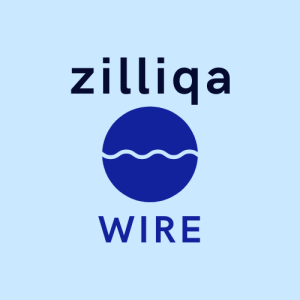Zilliqa 2.0 Launches with Comprehensive EVM and PoS Support
Zilliqa, a prominent blockchain project recognized for its pioneering use of sharding technology, has officially unveiled version 2.0 of its network. This significant upgrade marks a pivotal advancement towards creating institutional-grade infrastructure and achieving compatibility with Ethereum. The thorough protocol revamp introduces a range of technical enhancements and aims to set the stage for increased adoption, as Zilliqa seeks to reclaim its standing in an ever-evolving blockchain landscape. With ZIL currently trading over 95% below its peak value, investors are left wondering if this upgrade could catalyze a lasting price recovery.
Zilliqa 2.0 Introduces Full EVM Support and Institutional Features
The transition to Zilliqa 2.0 is not merely a superficial enhancement; it embodies a complete protocol overhaul intended to rectify historical shortcomings and unlock new applications. By integrating Ethereum Virtual Machine (EVM) compatibility, developers can now easily deploy Ethereum-based smart contracts and decentralized applications (dApps) on the Zilliqa platform with minimal adjustments to their code. This important update enhances the network’s interoperability with the broader Ethereum ecosystem, significantly broadening its applicability and attractiveness. Additionally, Zilliqa 2.0 introduces a new Proof-of-Stake (PoS) consensus mechanism, replacing the previous Proof-of-Work (PoW) system, which aims to improve scalability, energy efficiency, and decentralization. Its modular architecture now supports customizable shards, cross-chain communication, and light client functionality, all designed to deliver enterprise-level performance and adaptability.
Developers and Institutions Reassess Zilliqa
The updated network has already sparked interest from various fintech and decentralized finance (DeFi) initiatives. Early partnerships, such as those with LTIN and deBridge, are laying the groundwork for tokenized assets and regulated liquidity channels. Notably, deBridge is working to introduce native USDC to the Zilliqa network, representing a crucial step towards enhancing cross-chain liquidity and institutional relevance. Furthermore, the newly designed staking mechanisms aim to streamline the onboarding process for validators while incentivizing early migration from version 1.0 to facilitate a swift transition of liquidity to the upgraded network. As stated by Zilliqa’s interim CEO, Alexander Zahnd, the platform’s new strategic direction is grounded in trust and technical excellence rather than mere hype. The roadmap includes features that prioritize privacy, digital identity tools, and smart accounts, ensuring the protocol can meet the needs of compliance-driven institutions and the broader developer community in the future.
ZIL Faces Challenges Holding Key Support Amid Market Weakness
Despite ongoing downward pressure from the broader cryptocurrency market, Zilliqa’s native token, ZIL, has exhibited signs of technical resilience around pivotal Fibonacci retracement levels. Crypto analyst Emilio Bojan noted that ZIL rebounded sharply from the 0.618 Fibonacci retracement level at $0.01042, managing to sustain itself above the 0.5 level. This development suggests that buyers are actively engaging at crucial support points. This technical scenario has sparked cautious optimism among bullish traders, who are now targeting a potential short-term move towards the $0.01129 resistance level.
Zilliqa Price Outlook
As of this writing, ZIL is trading at $0.01063, reflecting a decline of 2.2% over the past 24 hours, with a trading volume of $9.88 million, down 1.5% from the previous day—indicating a slowdown in trading activity. The circulating supply of ZIL exceeds 19.5 billion tokens, with a total supply cap of 21 billion, resulting in a market capitalization of approximately $207.6 million, placing it at rank 268. Currently, ZIL remains over 95% below its all-time peak of $0.2554 reached in May 2021, while being 345% above its all-time low of $0.002396 recorded in March 2020. This disparity highlights the token’s potential for volatility and the possibility of upside if market sentiment shifts positively. Even though the network’s upgrade is fundamentally bullish, traders may remain cautious in the short term until concrete price action, supported by increased trading volume and sustained interest, signals a potential reversal. Nonetheless, the structural enhancements introduced by Zilliqa 2.0 could ultimately set the stage for a long-term recovery if they translate into real user growth and ecosystem engagement.

